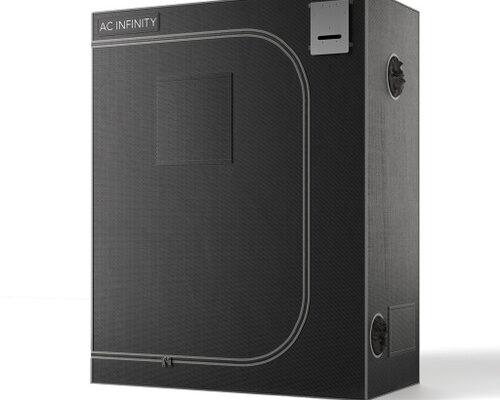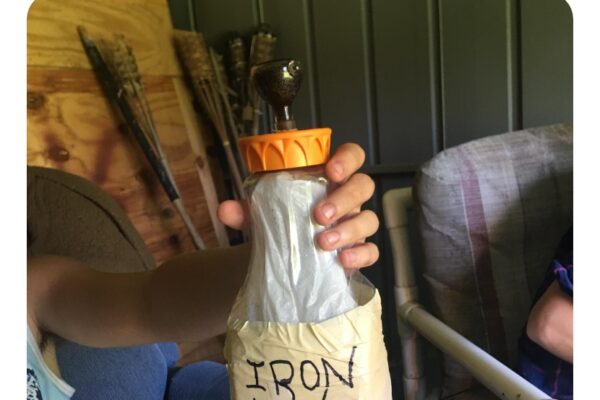Your cart is currently empty!
Pro-Mix Vs. Sunshine Mix
Hello all. I’ve been growing in Roots Organic soil for the past 9 months or so but have been thinking of switching back to Pro Mix. When I did grow in Pro Mix, I would add a good amount of growstone for aeration and a little compost for some organic material. Roots seems to work great but half the time I get fungus gnats flying right out of a new bag. I’m really sick of fighting those gnats and I think I can save some money buying a bale of peat and amending it myself. My Question is Pro-Mix or Sunshine Mix? Which do you like better and why?
Comments
-
I’m growing in Sunshine Mix now after using Promix BX in the past. I haven’t used the new Promix HP/CC, which is probably the one you’d want (it includes coco and other good stuff), but with the old BX you had to mix in a significant amount of perlite to really make it work well for drainage and oxygen, otherwise it held a bit too much water (which could explain the fungus gnats).
The Sunshine mix seems to stay fluffier on its own, and while it’s early, so far I’m pretty happy with it out of the bag. If you’re planning to buy bales and amend yourself, I’m guessing the Dude & Scotty will recommend coco over peat.
Not sure how much “a little compost” is, but keep in mind that both ProMix and Sunshine are inert and will require significant amendment, or feeding, nutritionally they are no better for your plants than sawdust. Roots Organics, by contrast, is an enriched potting soil. Compost can hold a lot of moisture, too, so factor that in.
Another option would be to reuse your existing Roots soil, turning it with amendments to replace those that were used, and after a few grows, some material to keep it fluffy. Lots of outdoor gardeners have been turning and fertilizing the same soil every season for generations.
-
Thanks for the info. I’ll probably end up going with the Pro Mix HP or HP CC and mixing in worm castings with a few other things.
-
If you want to make your own soil, I wouldnt use either of those products with the aeration stuff already mixed in. What you want is PLAIN peat moss:
https://www.groworganic.com/sunshine-peat-moss-2-2-cu-ft.html
and then add some PUMICE and RICE HULLS for aeration. Pumice is similar to perlite but is more natural and doesnt break down to dust like perlite does. Rice hulls are natural and break down very slowly and turn into silica.
1 part peat
1 part compost/castings
1 part aeration (2/3 part pumice + 1/3 part rice hulls)to make your base mix then add your nutrients and minerals to that.
full recipe is here:
https://buildasoil.com/collections/soil/products/living-organic-soil
and get some nematodes to help take care of those gnats, usually takes a couple of applications to fully get rid of them but they work better than anything else I’ve tried:
-
I’ve been using Pro-Mix BX for everything for years – seed-starting, bedding plants (about 50 flats/yr), perennials in trade gallons (about 1000/yr). It’s a little coarse for seed starting and a little light for perennials, but it works. I’ll sometimes add some Little River compost out of the bag to the perennials pots to give them more nutrition and weight, and I’ll hand sift out the twigs and larger chunks of perlite for seed starting, but I really don’t screw with it very much. I rarely even use Miracle-Gro on the annuals – maybe 2 pounds a season if they’ve gotten rinsed out a lot by rain.
For seed starting, my germination rates vary. A few perennials can come in below 50%, most annuals are 80%-100%. The variation is more a function of the specific variety and the freshness of the seed … and whether or not I screwed something up with temp or moisture. E.g., I struggled with delphinium germination for a couple of years until I figure out what I was doing wrong (following the supplier’s recommendations). I went from about 20% to over 80% when I finally did it my own way.
I use the 3.8cf compressed bales only. They’re about $35 to me, but then they expand to about 2.3 times the volume of media in a 2.8cf uncompressed bag. I’ve never had a problem with gnats. But then, my supplier does a volume business in the stuff, so it’s always “fresh” – never sits around for more than a week or two.
I go through about a skid of 3.8 cf bales a year, so mixing my own is completely out of the question. If you’re going to try that, remember that coco has a fairly neutral pH, but peat is very acidic. You’ll need to lime peat to bring the pH up to a relatively neutral range, and because the pH of peat varies significantly and the different species of peat hold pH (after amendment) for different lengths of time, you’ll need to measure pH on a regular basis. What’s nice about using a commercial/professional mix is that the pH is pretty consistent and stable.
Just my two cents.
-
Like Soup said your best bet is to just go with straight Canadian Sphagnum Peat Moss/Coir. That way you pretty much control the mix. My base is pretty similar to Soups with some slight differences. This is what I do:
Canadian Sphagnum Peat Moss- 20%
Coco Coir- 13.33%
Worm Castings- 14.17%
Compost- 14.17%
Pumice Stone(1/4 + 3/8 mix)- 20%
Rice Hulls- 13.33%
Inoculated BioChar- 3%
Fungal Inocolated BioChar- 2%Then I always add Yucca Meal to the base for a wetting agent(among other benefits). Then you just add your fertilizers and amendments to the base. I know the percentages seem crazy, but it basically comes out to 1/3 peat/coir, 1/3 aeration, just under 1/3 life(compost/castings) and 5% of the volume of Biochar which adds almost pure carbon, helps texturize the soil, retains moisture and most importantly, provides a home for microbial life.
To inoculate the biochar I just make a worm casting, insect frass & forest humus tea and poor the biochar into the brew and aerate and brew for 24 hrs. Then I let the biochar dry/cure and do the same process again. I will do this process 4-5×. And then finally let it mostly dry(I like slight moisture) and then it’s ready to mix in with the soil base. Fungal inoculation of Biochar is a bit trickier so I’m not going to go into the details. It is not necessary, but of his certainly beneficial.
As I said before, I know my percentages seem a little crazy, but it’s just me being anal. It’s pretty much a base broken down by thirds. Soup used the word “part.” Same thing. To make things easier here is the mix broken down in measurements to make a cubic foot:
* 1 1/2 gallons of Canadian Sphagnum Peat Moss
* 1 gallon of Coir
* 1 gallon + 1 cup of worm castings
* 1 gallon + 1 cup of compost
* 1 1/2 gallons of Pumice Stone
* 1 gallon of Rice Hulls
* 3.6 cups of Charged Biochar
* 2.4 cups of Fungal Biochar
* 1 tsp of Yucca MealThat makes roughly 1 CuFt of base. You can just do 6 cups of biochar, but absolutely make sure it has been charged(or inoculated). This base has served me well for a very long time, regardless of whatever I was growing. And whatever fertilizers and amendments you add is up to you. I have probably 20 different mixes to this base depending on what fruit, veggie, ornamental, etc, etc…I’m growing. Obviously different species like different NPK ratios, micronutriment ratios, etc, etc…Some species thrive just in this base alone. Hope I could help. Oh and if you want to do a big mix, like a cubic yard, just multiply each measurement above times 27. That will give you a cubic yard(27 cuft).
Recent Posts
Last grow for a minute
So, here’s the deal. For reasons that it doesn’t matter this may be my last grow for a year…
Whats cooler then making your own beans? Making some amazing beans is what’s better!
I’ve been growing for about 5 years maybe 6 now since we went legal in Oklahoma. I grabbed a…
What are those?????
Ok, so I thought I had lost my touch lately on popping seeds. I’ve NEVER had issues before I’ve…
First time grower needs help!!!
I have been watching the DGC for quite a while now, not a patreon yet but very soon! I…







Leave a Reply
You must be logged in to post a comment.